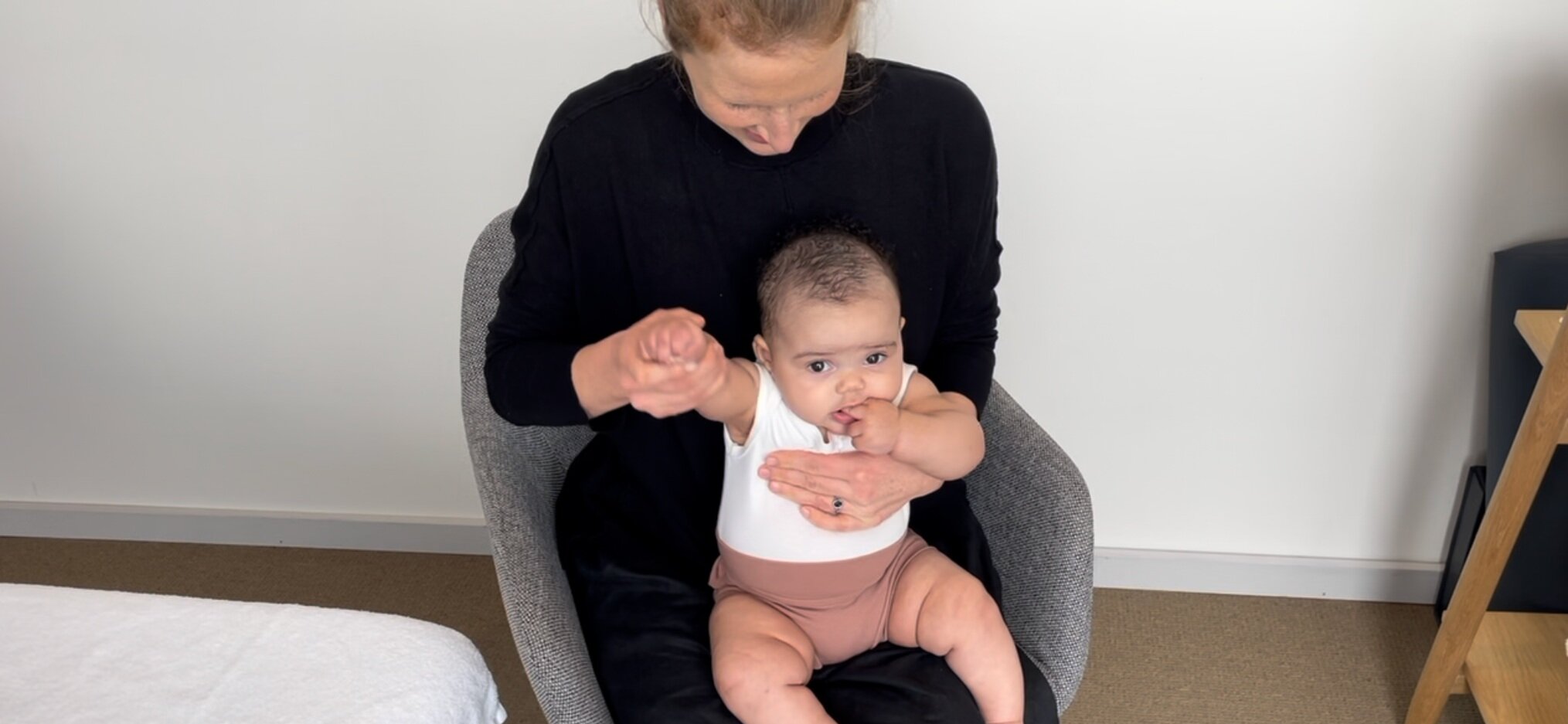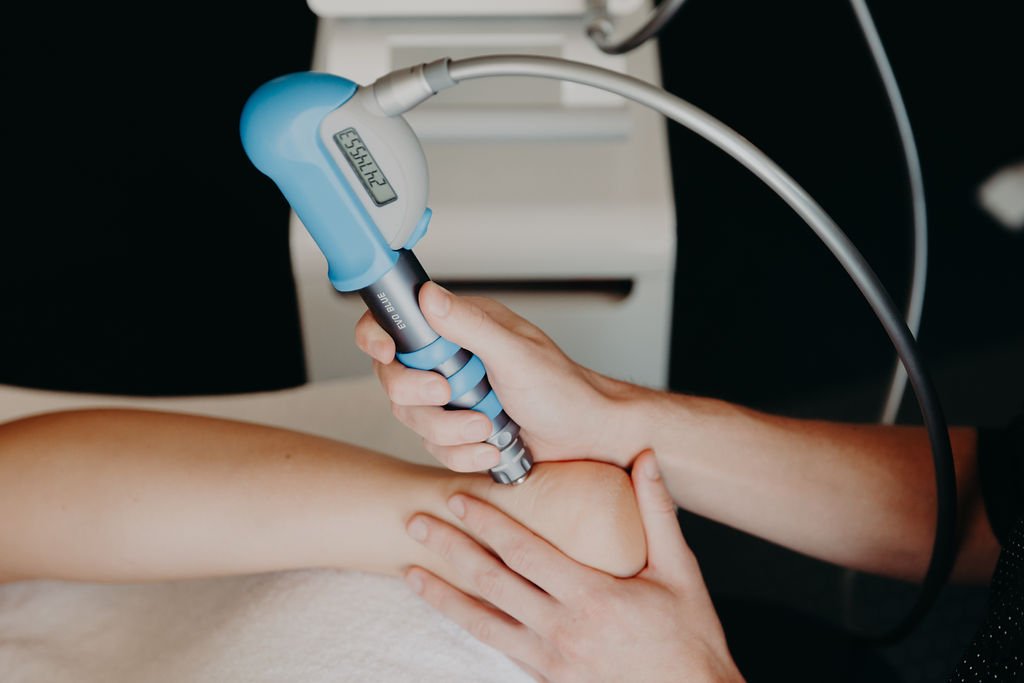Greater Trochanteric Pain Syndrome (GTPS) is a common cause of pain that affects the outer side of the hip. It is primarily caused by inflammation or irritation of the soft tissues that surround the greater trochanter, which is the bony prominence on the lateral (outer) aspect of the femur (thigh bone). The greater trochanter serves as the attachment site for several important muscles and tendons that stabilise and move the hip, including the gluteus medius, gluteus minimus, and the iliotibial band (ITB).
What is Greater Trochanteric Pain Syndrome (GTPS)?
Historically, it has been explained that lateral hip pain or pain over the greater trochanter was caused by inflammation of the trochanteric bursa. This simplistic view has been disputed and the condition is now being referred to as GTPS, as it is now considered that the pain is generated from both gluteal tendon pathology and the bursa.
GTPS encompasses a range of conditions that cause pain around the greater trochanter, including:
Gluteal Tendinopathy: Degeneration or inflammation of the gluteal tendons, particularly the gluteus medius and minimus, which are essential for hip stability and movement.
Trochanteric Bursitis: Inflammation of the bursa, a small fluid-filled sac that reduces friction between the tendons and the greater trochanter.
ITB Syndrome: Tightness or inflammation of the iliotibial band, a thick band of tissue that runs along the outside of the thigh and attaches to the greater trochanter.
Causes and Risk Factors
GTPS is often caused by repetitive stress or overuse of the hip muscles, leading to microtrauma in the tendons and bursa. Common risk factors include:
Overuse or repetitive movements: Activities like running, cycling, or standing for long periods can strain the hip structures.
Age: GTPS is more common in middle-aged and older adults, particularly women, due to age-related changes in the tendons.
Obesity: Increased body weight puts additional stress on the hip joints and tendons.
Hip Abductor Weakness: Weakness in the muscles that stabilise the hip can lead to abnormal movement patterns and increased strain on the tendons and bursa.
Previous Injury: A history of hip or lower limb injuries can predispose individuals to GTPS.
Symptoms of GTPS
GTPS is characterised by:
Lateral Hip Pain: A deep, aching pain on the outer side of the hip, often worsening with activities such as lying on the affected side, walking, climbing stairs, or getting out of a chair.
Tenderness: Pain on palpation over the greater trochanter.
Radiating Pain: The pain may radiate down the outer thigh to the knee but usually does not extend past the knee.
Morning Stiffness: Stiffness and discomfort in the hip, particularly after periods of inactivity, like getting out of the car or getting out of bed in the morning.
Diagnosis
Diagnosing GTPS involves a combination of clinical evaluation and imaging studies:
History: your Osteopath at Bodyfocus will take a thorough case history, to get an understanding of timeframes, what your symptoms are, and how it is affecting your quality of life.
Physical Examination: we will assess tenderness over the greater trochanter, test the strength of hip muscles, mobility of the hip joint, and evaluate the patient's gait.
Imaging: Ultrasound or MRI may be used to confirm the diagnosis and rule out other potential causes of hip pain, such as hip osteoarthritis, a hip labral tear or a lumbar spine pathology.
What is Shockwave Therapy (SWT)?
Shockwave Therapy involves the delivery of high intensity sound waves through a special handpiece.
What are the benefits?
Provides pain relief (often immediate)
Promotes tissue regeneration and repair (in the longer term)
The treatment initiates an inflammation-like process. The body responds by increasing the blood circulation and metabolism at the treatment area which in turn accelerates the body’s own healing processes. This increase in the blood flow within the affected area, stimulates cell regeneration and healing, and decreases local factors which can cause pain. The shockwaves also break down injured tissue and calcifications.
SWT is particularly effective in treating GTPS because it targets the underlying causes of pain, promoting long-term healing rather than just masking symptoms
Why Choose Shockwave Therapy with the EMS Dolorclast Device?
In Australia, SWT is becoming an increasingly popular treatment for GTPS due to its effectiveness and safety profile. The EMS Dolorclast Shockwave Therapy device is at the forefront of this technology, offering precise and powerful treatment that leads to significant improvements in pain and function.
Unlike surgical options, SWT is non-invasive and involves minimal downtime, allowing patients to return to their daily activities more quickly. It is also a good option for patients who have not responded to other treatments such as regular manual therapy, corticosteroid injections, or oral medications.
Studies have shown that SWT, particularly using the EMS Dolorclast device, can provide significant pain relief and improve function in patients with GTPS. Many patients experience a reduction in pain after just a few sessions, with continued improvement over the following weeks and months. The therapy is generally well-tolerated, with only mild side effects such as temporary redness or swelling at the treatment site.
What to Expect During Treatment
During an SWT session with Bodyfocus, your Osteopath will apply the EMS Dolorclast device to the painful area of the hip. The device delivers shockwaves that penetrate the skin and target the deeper tissues. Your session will be for 30 minutes, however, the SWT lasts for only 5 minutes. Most patients require 3-5 sessions spaced a week apart.
Patients may feel some discomfort during the treatment, however we make this as tolerable as possible, and the discomfort stops when the treatment stops.
Ideally, you have immediate pain relief. Your pain may return, however, over the 3-5 sessions, we expect 70-90% of patients to have resolution of their symptoms.
These benefits are also enhanced by strengthening or loading exercises to the hip stabilising musculature. You will be given a program to ensure the best health outcomes.
It's important to follow any post-treatment care instructions provided by your osteopath at Bodyfocus.
Who Can Benefit from SWT?
SWT with the EMS Dolorclast device is suitable for most patients with GTPS, particularly those who have not responded to other treatments. However, it may not be recommended for individuals with certain medical conditions, such as blood clotting disorders, if you are taking blood thinning medication, have localised infections, have cancer or have recently recovered from cancer, if you have had a cortisone injection in the previous 6 weeks, or if you are pregnant. Your Osteopath at Bodyfocus will conduct a thorough assessment to determine if SWT is the right treatment option for you.
If you’re interested in learning more about getting relief from your greater trochanteric pain or the use of shockwave therapy, we would love to help you out. Please click here to book an appointment, or contact our friendly reception team on 6331 6225 to make an appointment.


























